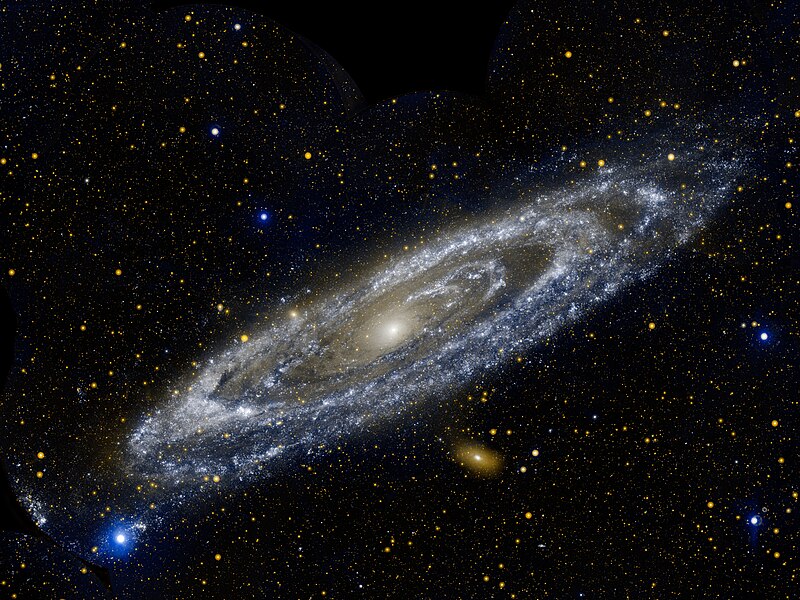File:Andromeda galaxy 2.jpg

Diminzioni di st'antiprima: 800 × 600 pixel. Àutri risuluzzioni: 320 × 240 pixel | 640 × 480 pixel | 1 024 × 768 pixel | 1 280 × 960 pixel | 2 560 × 1 920 pixel | 6 000 × 4 500 pixel.
Virsioni a àuta risuluzzioni (6 000 × 4 500 pixel, grannizza dû file: 21,44 MB, tipu MIME: image/jpeg)
Cronoluggìa dû file
Fari clic supra un gruppu data/ura pi vìdiri lu file comu si prisintava ntô mumentu nnicatu.
| Data/Ura | Miniatura | Diminsioni | Utenti | Oggettu | |
|---|---|---|---|---|---|
| currenti | 12:09, 21 maiu 2012 |  | 6 000 × 4 500 (21,44 MB) | Originalwana | {{Information |Description ={{en|1=Hot stars burn brightly in this image from NASA's Galaxy Evolution Explorer, showing the ultraviolet side of a familiar face. At approximately 2.5 million light-years away, the Andromeda galaxy, or M31, is our [[:C... |
Pàggini c'ùsanu sta mmàggini
Li pàggini siquenti richiàmanu sta mmàggini:
Utilizzu glubbali dû file
Puru li wiki appressu ùsanu stu file:
- Utilizzu supra af.wikipedia.org
- Utilizzu supra an.wikipedia.org
- Utilizzu supra ar.wikipedia.org
- Utilizzu supra bg.wikipedia.org
- Utilizzu supra de.wikipedia.org
- Utilizzu supra de.wikibooks.org
- Utilizzu supra en.wikipedia.org
- Utilizzu supra eu.wikipedia.org
- Utilizzu supra fr.wiktionary.org
- Utilizzu supra hr.wikipedia.org
- Utilizzu supra it.wikipedia.org
- Utilizzu supra ja.wikipedia.org
- Utilizzu supra ko.wikipedia.org
- Utilizzu supra lb.wikipedia.org
- Utilizzu supra lv.wikipedia.org
- Utilizzu supra no.wikipedia.org
- Utilizzu supra pl.wiktionary.org
- Utilizzu supra pt.wikipedia.org
- Utilizzu supra ro.wikipedia.org
- Utilizzu supra sh.wikipedia.org
- Utilizzu supra simple.wikipedia.org
- Utilizzu supra sr.wikipedia.org
- Utilizzu supra sv.wikipedia.org
- Utilizzu supra ta.wikipedia.org


